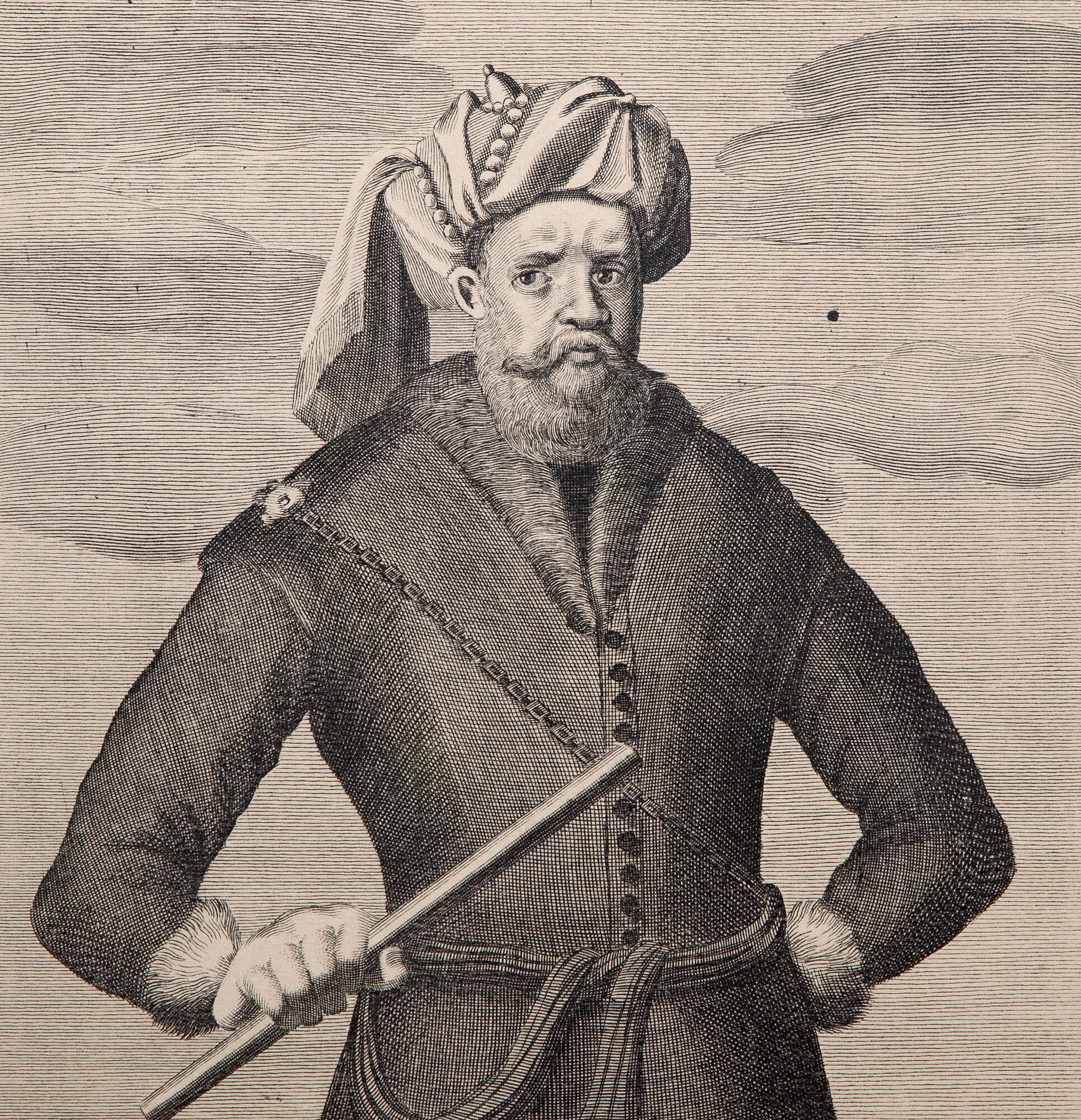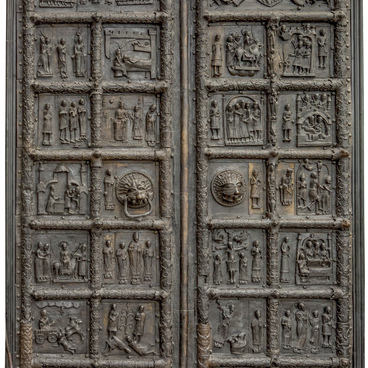The engraving with a portrait of the Cossack ataman Stepan Razin was printed in 1670 or 1671 by the German publishing house “Paulus Fürst, Widow and Heirs” in Nuremberg. The leader of the peasant uprising of 1670–1671 is depicted with a long mustache and a full beard, he is dressed in a caftan with fur trim on the collar and sleeves and wears an oriental turban on his head. Razin’s appearance in this portrait is fictional: his actual images have not been preserved.
Stepan Razin was born around 1630. His father Timofey Razya was a Don Cossack, his mother was probably a captive Crimean Tatar. The exact place of Razin’s birth is unknown. It is assumed that his native home was the village of Zimoveyskaya-na-Donu — the same place where Yemelyan Pugachev was born more than a century later. Presently, it is the rural locality of Pugachyovskaya, Volgograd Oblast.
Stepan Razin was first mentioned in historical sources in 1652. By this time, he had already become a Cossack ataman, participated in negotiations with the Kalmyks on peaceful coexistence and their joint struggle with the Tatars. In the 1660s, Razin and his Cossack squads fought with the Turks and Crimean Tatars, then led military campaigns on the Volga and Yaik (Ural) Rivers.
In 1665, Razin’s elder brother Ivan was executed by order of Prince Yury Dolgorukov, tsar’s voivode. In the spring of 1670, Razin led his Cossack army to Moscow “to beat all the princes and boyars, and noble people, and all the gentry of Russia”. The Cossacks were joined by runaway serfs, townspeople, Old Believers and peoples of the Volga region. The campaign turned into a powerful uprising that spread over a significant part of the territory of Russia.
The rebels managed to capture Tsaritsyn (now Volgograd), Astrakhan, Saratov, Samara and other cities. Near Simbirsk (now Ulyanovsk), Razin’s troops were defeated by the tsarist army under the command of Prince Yury Baryatinsky. The wounded ataman fled to the Don, where wealthy Cossacks handed him over to the government. In Moscow, Stepan Razin was executed by quartering in Red Square, near Lobnoye Mesto (a stone platform).
The large-scale peasant uprising became an object of close attention for the Europeans. In the fall of 1670, the uprising was covered in detail in the European press, primarily in German and Dutch newspapers. The published notes of foreigners — eyewitnesses of the events — have preserved the description of the ataman’s appearance:
Stepan Razin was born around 1630. His father Timofey Razya was a Don Cossack, his mother was probably a captive Crimean Tatar. The exact place of Razin’s birth is unknown. It is assumed that his native home was the village of Zimoveyskaya-na-Donu — the same place where Yemelyan Pugachev was born more than a century later. Presently, it is the rural locality of Pugachyovskaya, Volgograd Oblast.
Stepan Razin was first mentioned in historical sources in 1652. By this time, he had already become a Cossack ataman, participated in negotiations with the Kalmyks on peaceful coexistence and their joint struggle with the Tatars. In the 1660s, Razin and his Cossack squads fought with the Turks and Crimean Tatars, then led military campaigns on the Volga and Yaik (Ural) Rivers.
In 1665, Razin’s elder brother Ivan was executed by order of Prince Yury Dolgorukov, tsar’s voivode. In the spring of 1670, Razin led his Cossack army to Moscow “to beat all the princes and boyars, and noble people, and all the gentry of Russia”. The Cossacks were joined by runaway serfs, townspeople, Old Believers and peoples of the Volga region. The campaign turned into a powerful uprising that spread over a significant part of the territory of Russia.
The rebels managed to capture Tsaritsyn (now Volgograd), Astrakhan, Saratov, Samara and other cities. Near Simbirsk (now Ulyanovsk), Razin’s troops were defeated by the tsarist army under the command of Prince Yury Baryatinsky. The wounded ataman fled to the Don, where wealthy Cossacks handed him over to the government. In Moscow, Stepan Razin was executed by quartering in Red Square, near Lobnoye Mesto (a stone platform).
The large-scale peasant uprising became an object of close attention for the Europeans. In the fall of 1670, the uprising was covered in detail in the European press, primarily in German and Dutch newspapers. The published notes of foreigners — eyewitnesses of the events — have preserved the description of the ataman’s appearance:



